Cross Border Taxation
Enable Cross Border Taxation
The Enable cross-border taxation (Optional) is for multi country operators that only apply taxes in one jurisdiction, but is considered experimental at this time.
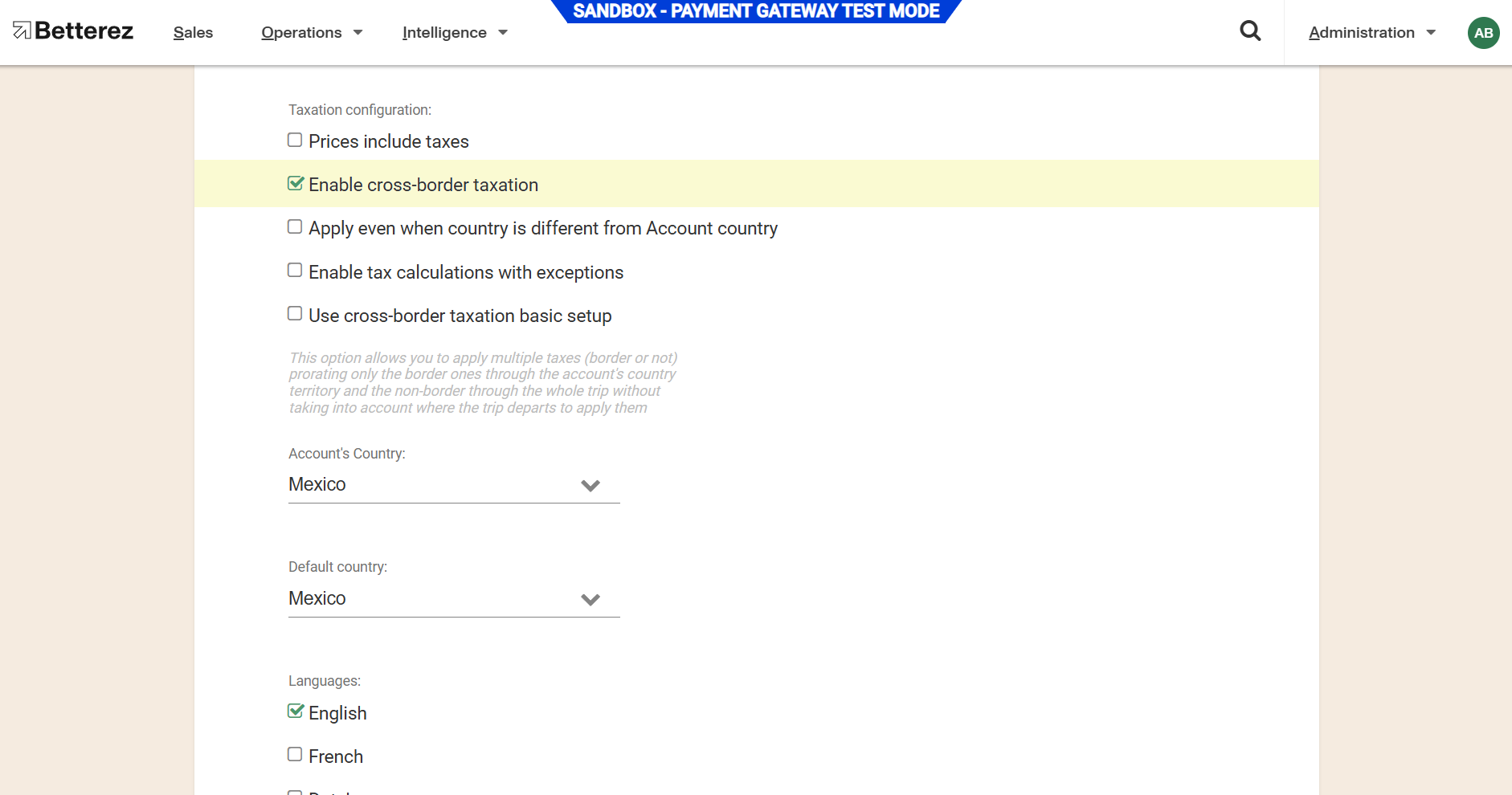
- Enable cross border taxation: If checked, cross border taxation will be enabled in the account and additional options will be listed.
- Apply even when country is different from Account country: If checked, then it will also be possible to calculate taxes if the departure station is not in the same country as configured in the ‘Account's Country’ field.
- Enable tax calculations with exceptions: If checked, the configured tax exceptions may have an effect on the tax calculation.
- Account's Country: Enter the country location of the main account.
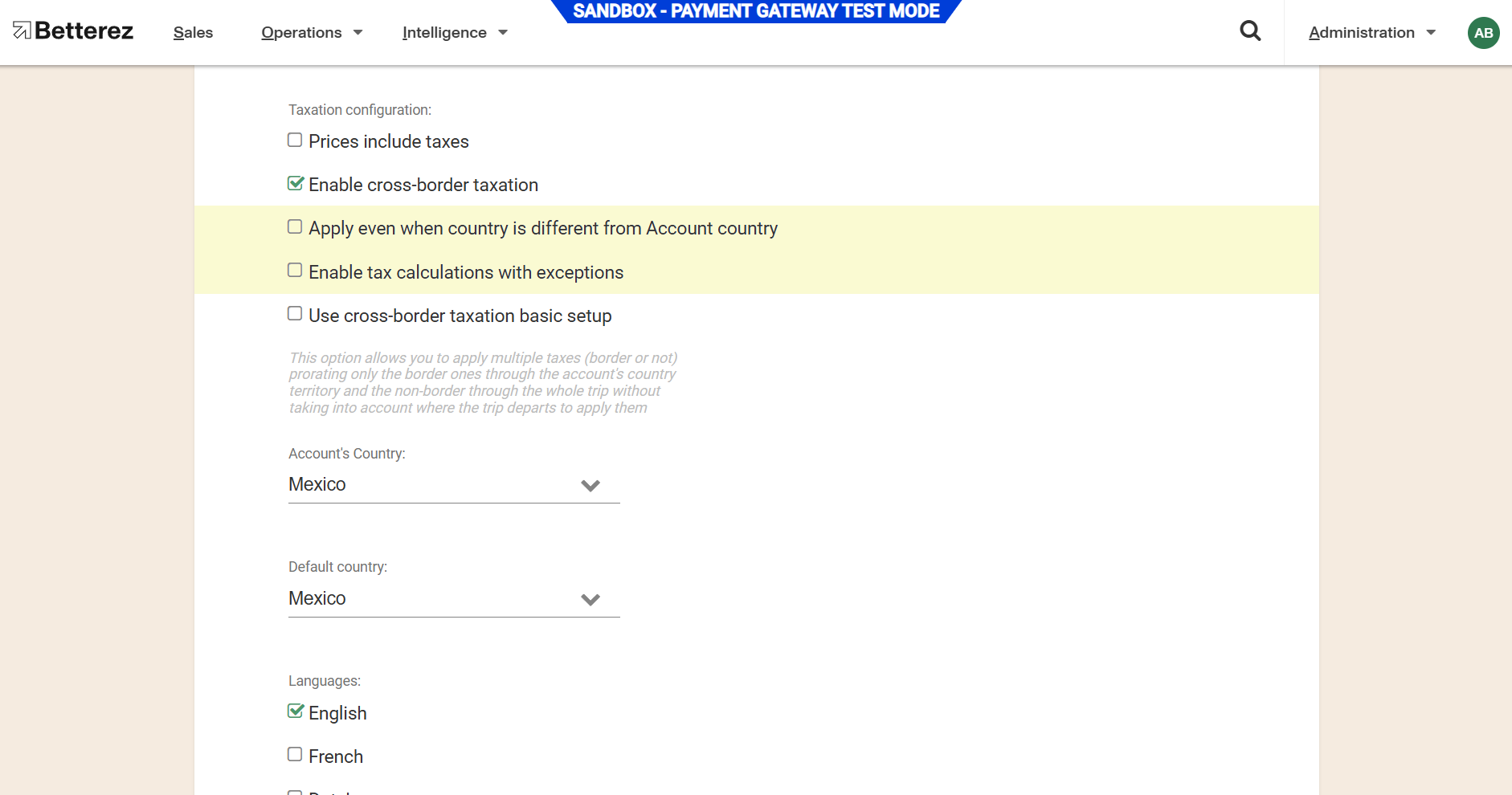
Cross-border taxation configuration
For cross border taxation to function correctly, it must be configured in 3 sections within the backoffice before it can be used.
Tax Level
In the taxes configuration page check the Is Border field only for the TAX which will be of border type.

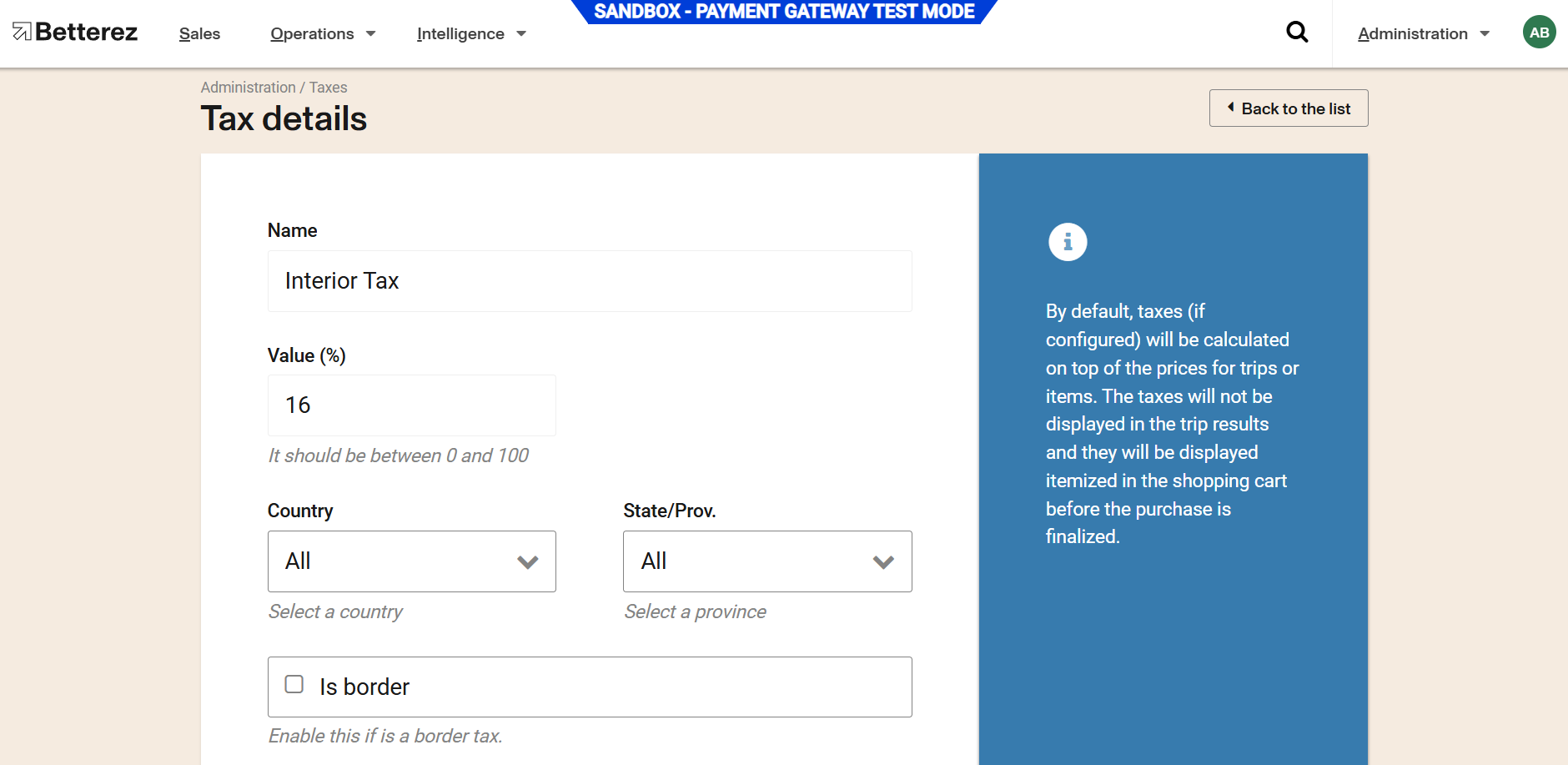
Station Level
If cross border taxation is enabled in the account, EVERY station must be configured and a section will appear in the station's configuration to select if the station is a border station and the country in which the station exists. This will allow the Cross Border Tax Configuration to identify which stations belong to the ‘Border’ group and which do not for the tax rule.
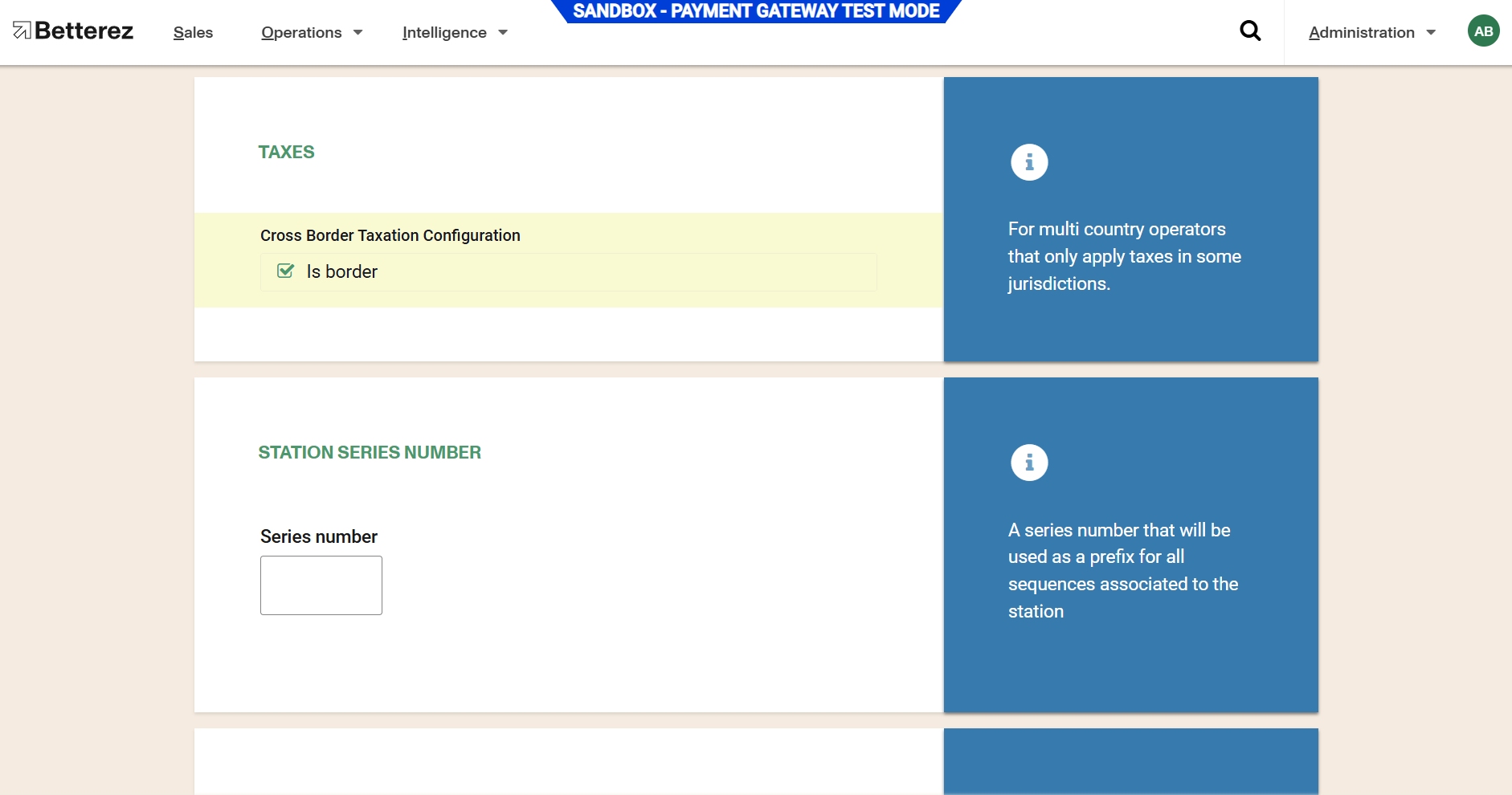
Route and fare level
Once Cross Border Taxation is enable in the account each route will have a Cross Border Taxation distance Table. In each space you will have to enter the distance between stations and this distance will be used for prorating the amount of tax applied to the journey using the different tax rates configured (normal vs. border rates). You can also upload the distances by downloading the csv template and uploading it with the values.
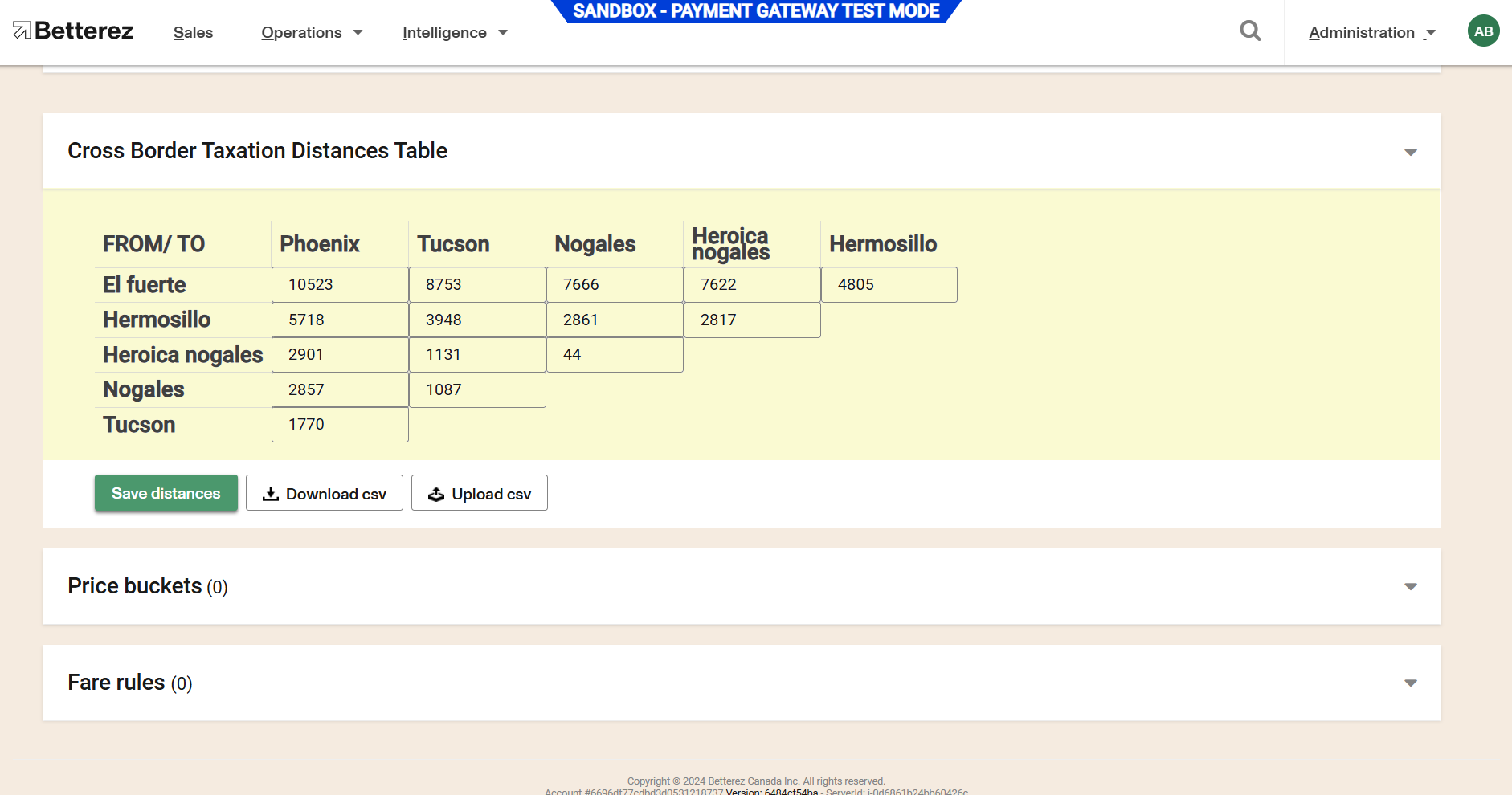
ⓘ Info: To enter values in the Cross Border Taxation Distance Table, only whole numbers are accepted. If your data contains decimals (e.g. 101.2, 204.3, 2302.5), it is recommended to multiply by 10, 100, or the appropriate factor, so that the decimal point is removed (e.g. 101.2 would be entered as 1012). This conversion ensures the correct interpretation and processing of the data in the table. Also, the values entered can be represented in miles, kilometres, or whatever measurement is required.
⚠ Warning: The Cross Border Taxation distance table must be completed entirely; otherwise, the proration values will be taken from the proration table for the product. Once you have completed all of these steps, cross-border taxation is now enabled and ready to use in the account.
Tax rules algorithm
As mentioned above, by setting up Cross Border Taxation, taxes can only be levied in one jurisdiction. Either in the jurisdiction of the country where the account is located or in a jurisdiction other than the country of the account. The important thing to note is that taxes will only be levied in the country where the departure station is located.
O&D are not from the same country (Example between Mexico and the United States)
Nogales, SON (Border MX) ⟶ Nogales, AZ (Border US) = Border Tax
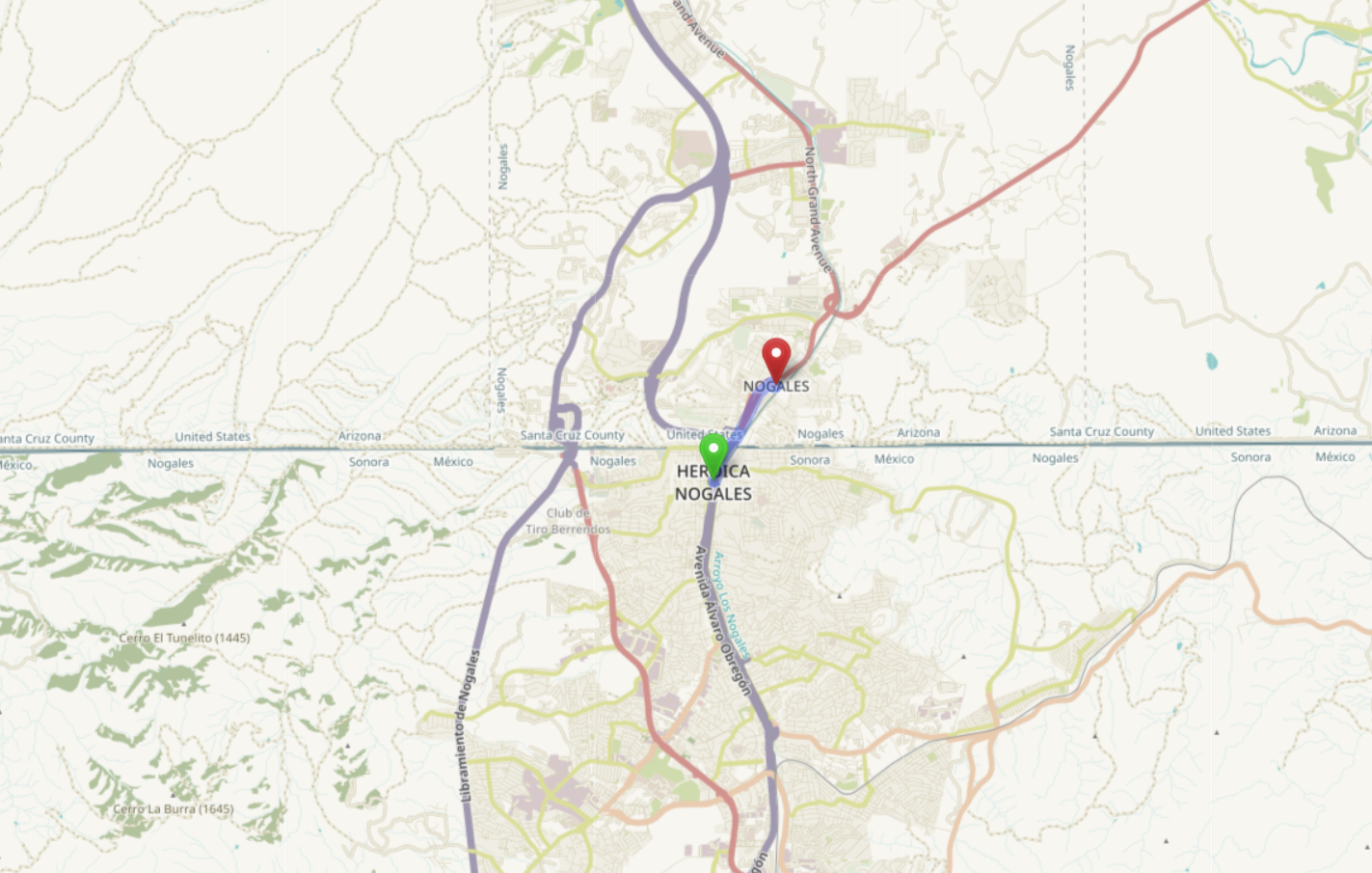
Nogales, SON (Border MX) ⟶ Tucson, AZ (Interior US) = Border Tax
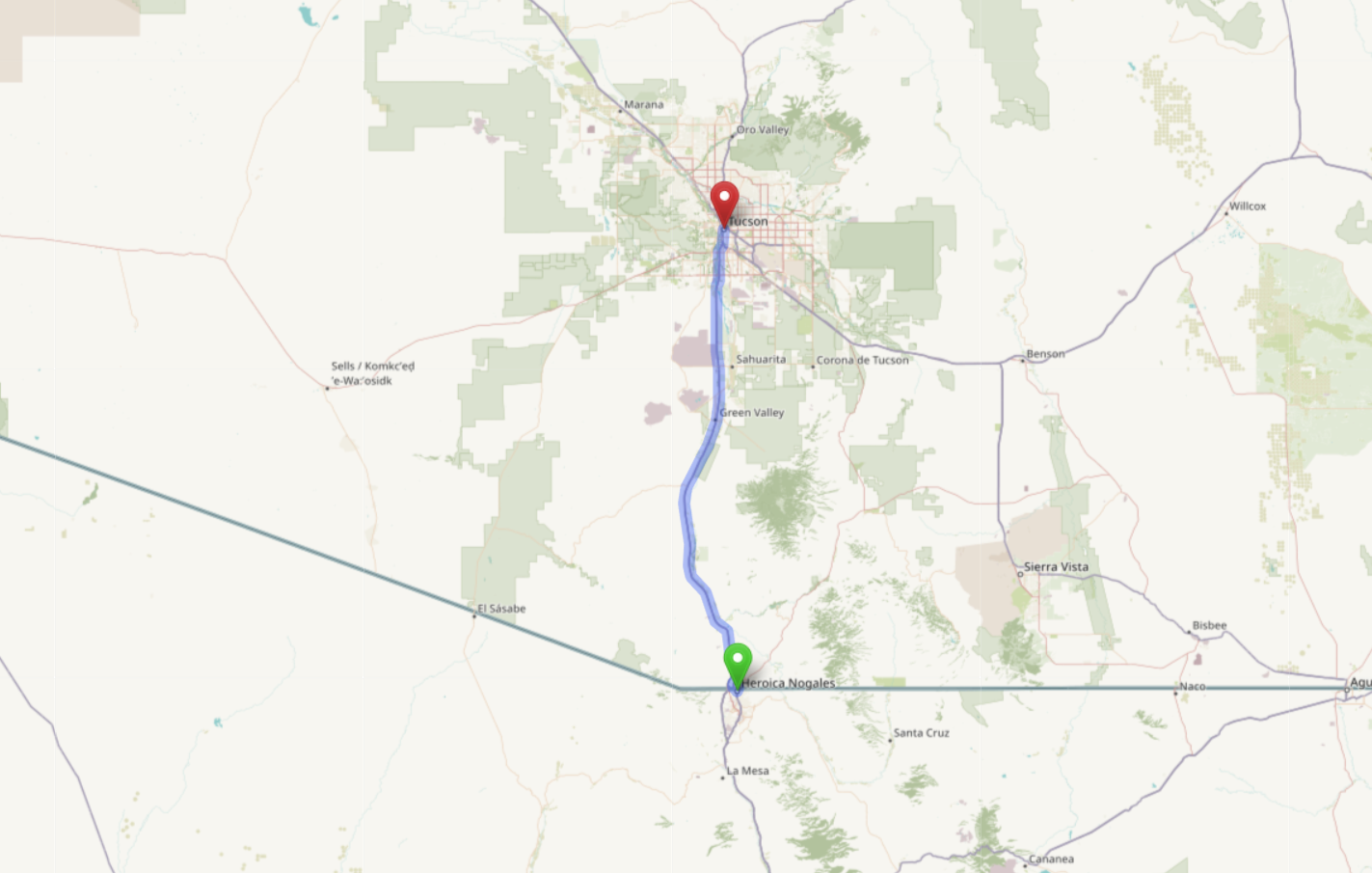
El Fuerte, SL (Interior MX) ⟶ Nogales, AZ (Border US) = Interior Tax
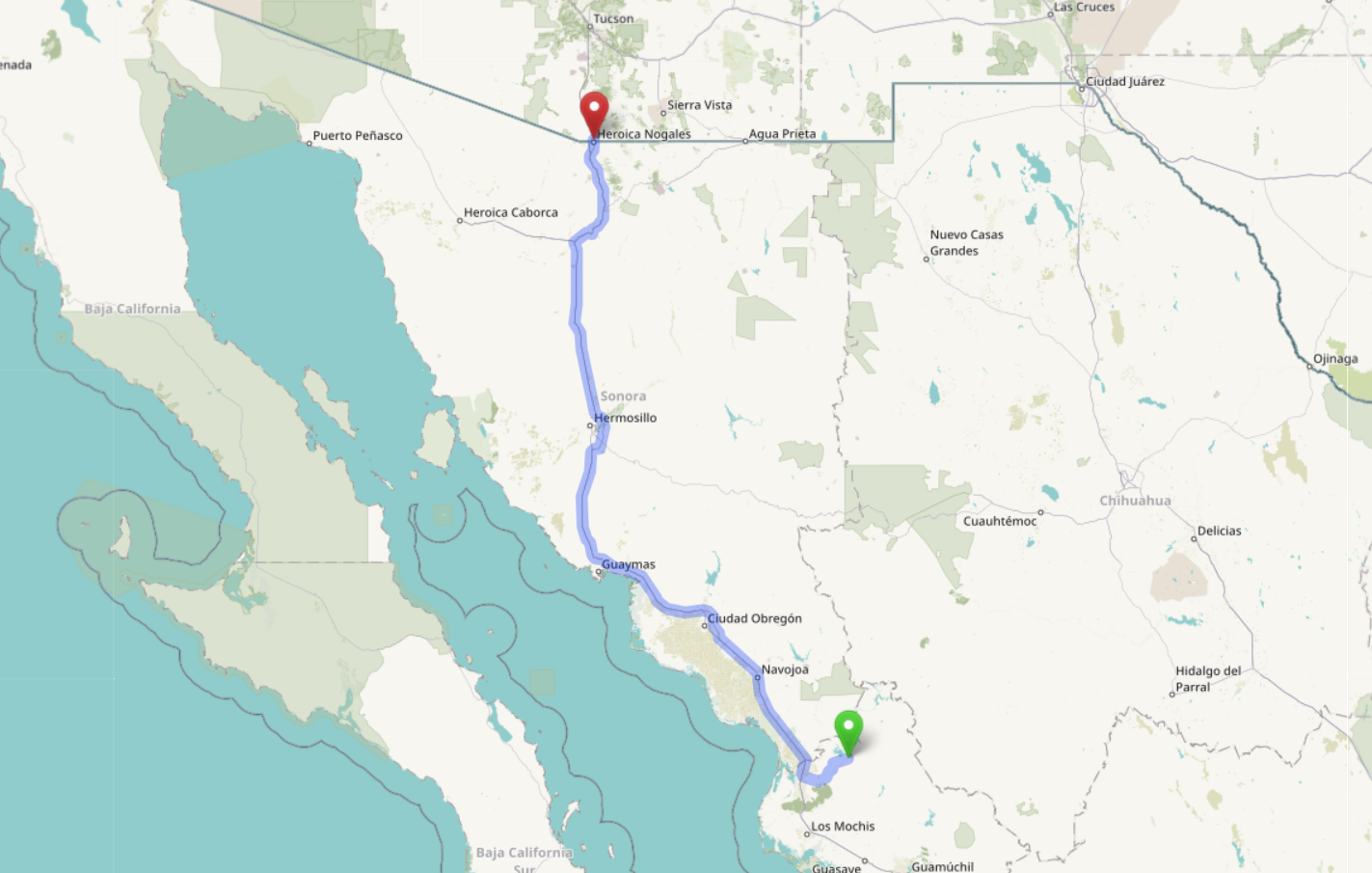
El Fuerte, SL (Interior MX) ⟶ Tucson, AZ (Interior US) = Interior Tax
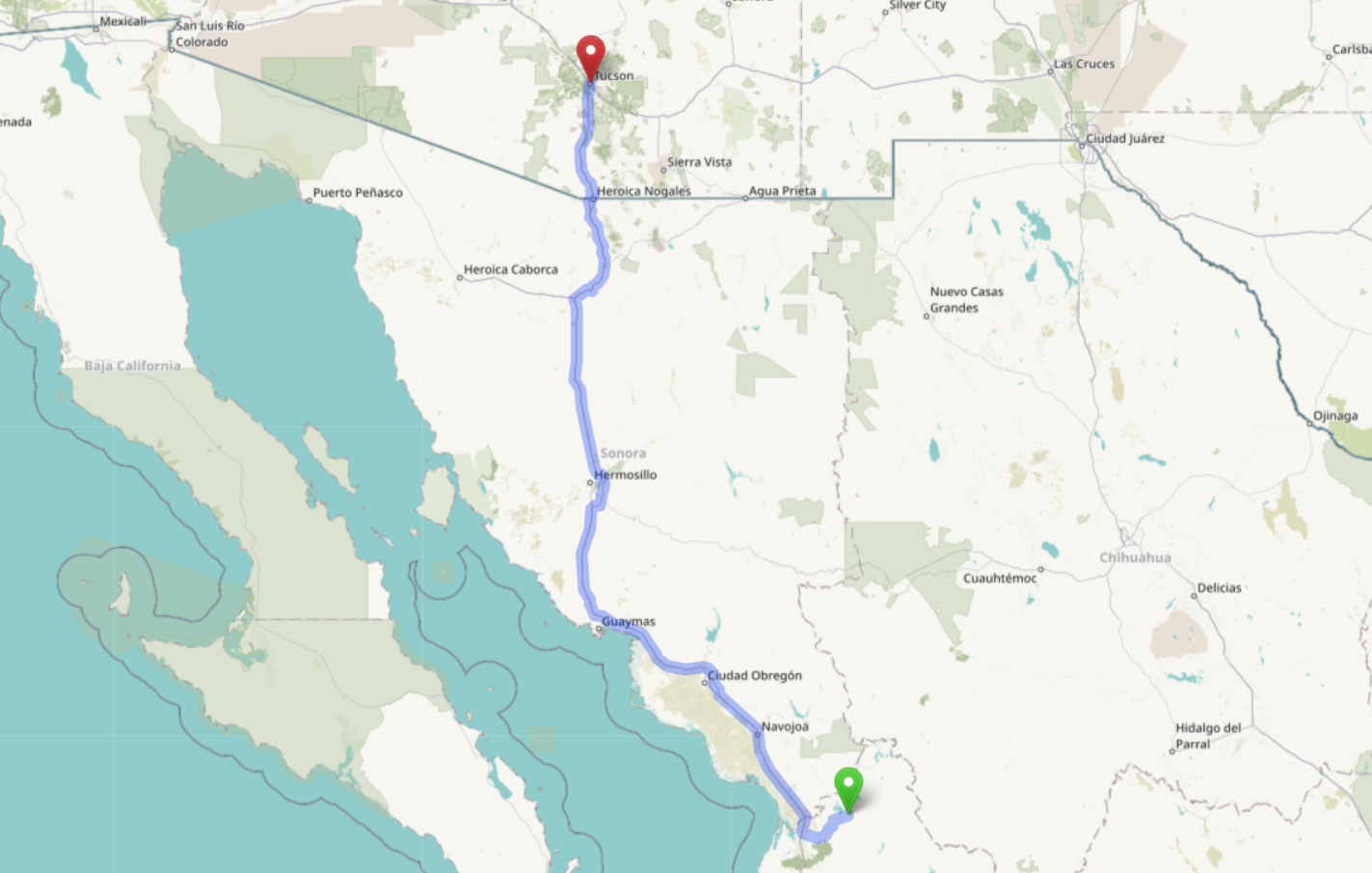
Example of use case
In the following image, the route from El Fuerte, Sinaloa (MX) to Phoenix, Arizona (US) is displayed, which has a fare of 120 USD and a distance of 1052.3 KM between these two points. On the other hand, the distance from El Fuerte, Sinaloa (MX) to the nearest station at the border that is part of the route is Heroica Nogales, Sonora (MX), with a distance of 766.6 KM. Finally, the tax rate in Mexico for bus fares is 16%.
With this data, we apply the formula to calculate the prorated tax:
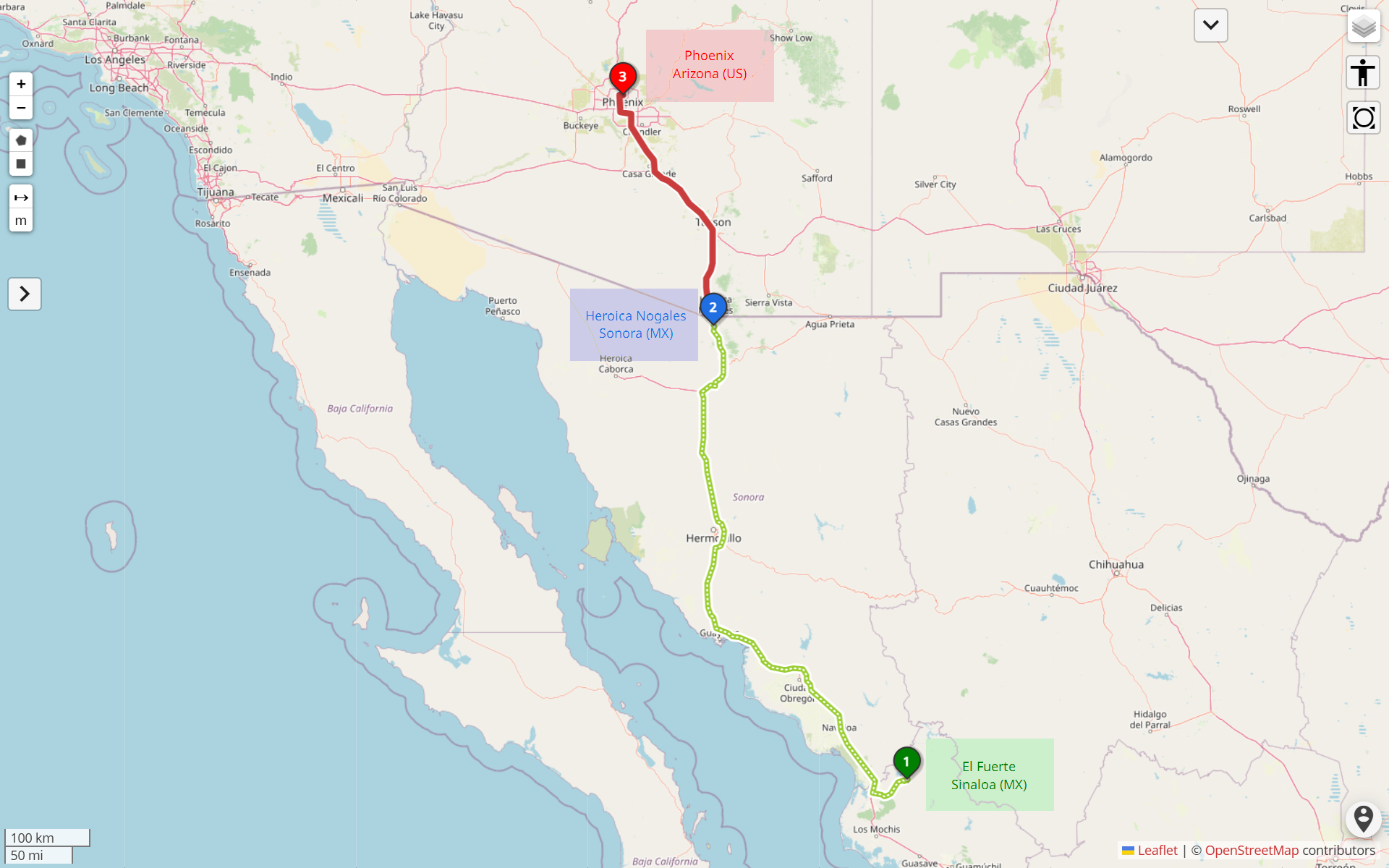
Completing the variables:
A: 766.6 (this value should be recorded in the Cross Border Taxation Distances Table)
B: 1052.3 (this value should be recorded in the Cross Border Taxation Distances Table)
C: 120 (price obtained from the configured price for the entire trip)
D: 0.16 (Interior tax according to logic)
Applying the formula: 766.6 / 1052.3 * 120 * 0.16
Result: 13.99 USD
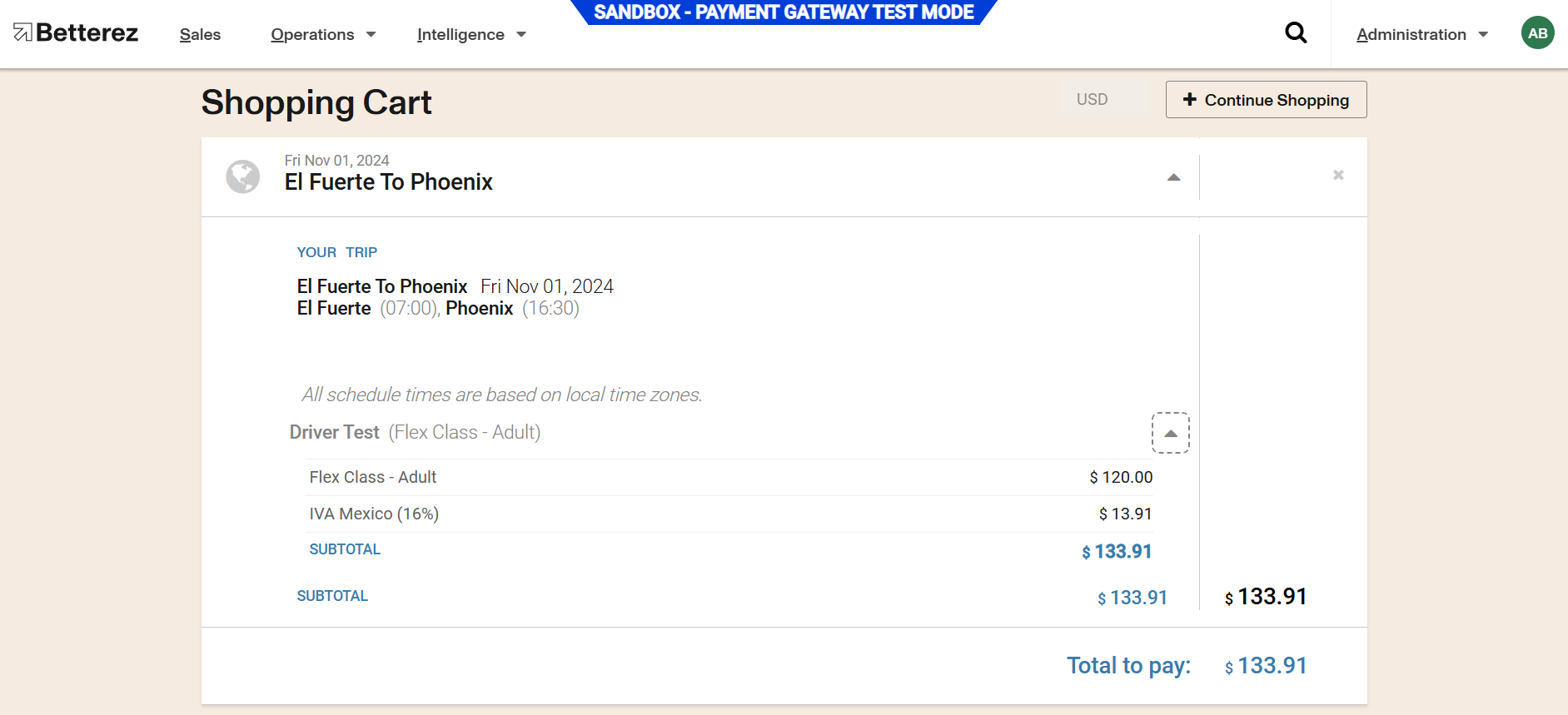
Use cross-border taxation basic setup
To use this configuration you need to Enable cross border taxation, once done it will appear 3 new options. After that, you should select the option Cross Border Taxation Basic Setup.

Basic configuration
In order to use the Cross Border Taxation Basic Setup functionality, it is mandatory to configure only two sections: Tax Level and Route and fare level. Unlike Cross Border Taxation, it is not necessary to mark the stations as 'Is Border' since the logic of this setup takes the last station in the country of origin of the reservation as the 'Border' station.
Expected behaviour
This option allows you to apply multiple taxes (border or not) prorating only the border ones through the account's country territory and the non-border through the whole trip without taking into account where the trip departs to apply them.
Correct performance
To properly use the Cross Border Basic Setup, the Account Country must select the country from which tax needs to be collected.
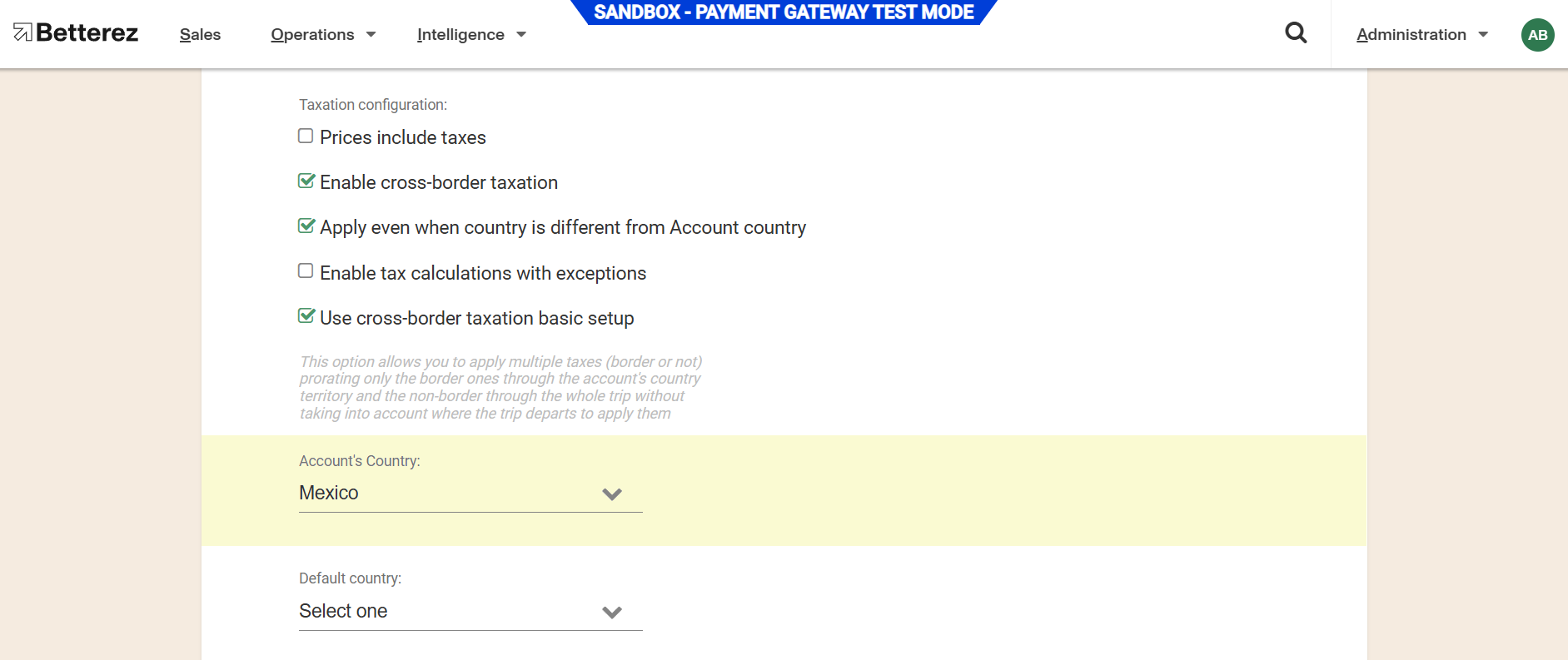
Also, the TAX of the country from which the route departs must be marked as ‘Is Border’. Otherwise, a prorated tax will not be generated based on the distance, but on the configured price.
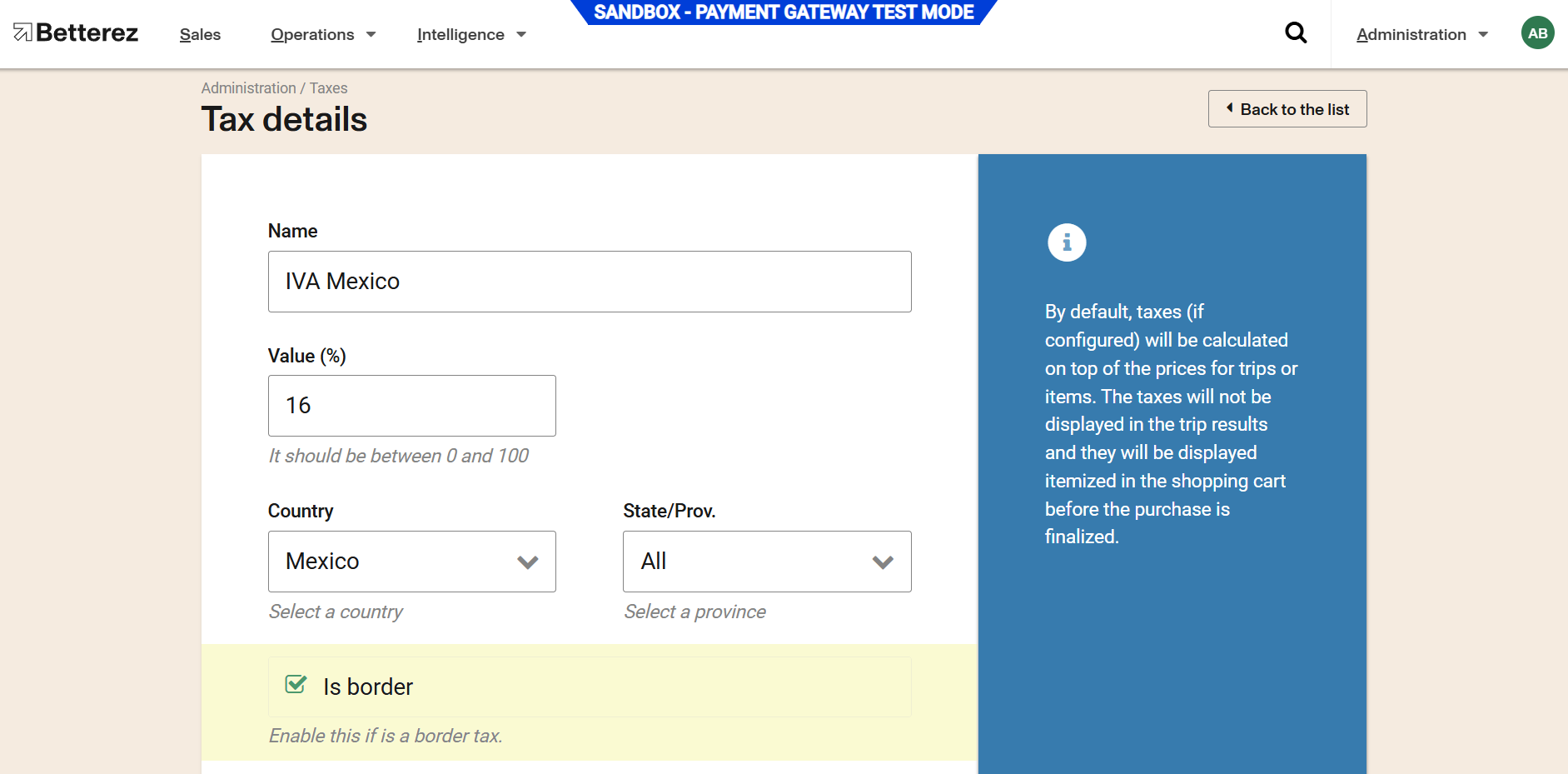
Prorated TAX algorithm
To calculate the prorated tax value, the following exercise should be performed:
A: Distance from the first station of the reservation to the first border station of the adjacent country.
B: Distance from the first station of the reservation to the last station in the adjacent country.
C: Fare for the route from the first station of the reservation to the last station in the adjacent country.
D: Tax percentage configured as 'Is Border' for the account's country.
FORMULA: A/B*C*D
Example of use case
In the following image, the route from El Fuerte, Sinaloa (MX) to Phoenix, Arizona (US) is displayed, which has a fare of 120 USD and a distance of 1052.3 KM between these two points. On the other hand, the distance from El Fuerte, Sinaloa (MX) to the nearest foreign station at the border that is part of the route is Nogales, Arizona (US), with a distance of 762.2 KM. Finally, the tax rate in Mexico for bus fares is 16%.
With this data, we apply the formula to calculate the prorated tax:

Completing the variables:
A: 762.2 (this value should be recorded in the Cross Border Taxation Distances Table)
B: 1052.3 (this value should be recorded in the Cross Border Taxation Distances Table)
C: 120 (price obtained from the configured price for the entire trip)
D: 0.06 (tax configured as 'Is Border')
Applying the formula: 762.2 / 1052.3 * 120 * 0.16
Result: 13.91 USD
